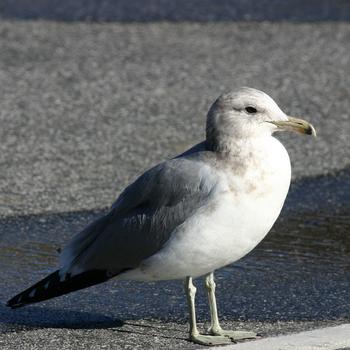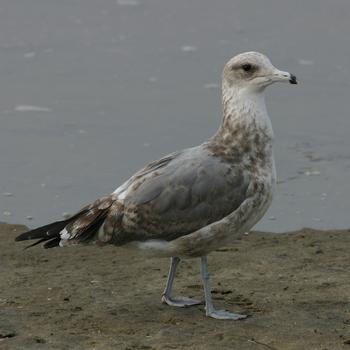California Gull (Larus californicus)

California Gull, adult - Big Bear Lake, CA
© Tom Benson

California Gull, immature - San Diego, CA
© Tom Benson
The California Gull is an uncommon winter visitor to campus from the end of October through the beginning of April. They generally occurs in flocks and are often seen on the athletic fields early in the morning, or flying overhead as they move from their roosting areas to their feeding areas. It is a common migrant and wintering bird in southern California.
High Count: 142, Average Count: 5-30
Adult California Gulls in the winter have a gray back, white head with brownish streaking on the back of the head and neck, white underparts, grayish yellow legs, a yellow bill with a black ring and a red spot near the tip, and a dark eye. It takes four years for this species to attain adult plumage, and immature plumages vary by age. First winter birds (the most frequently encountered immature plumage) are mottled brown overall, with pink legs and a pink bill with a black tip.